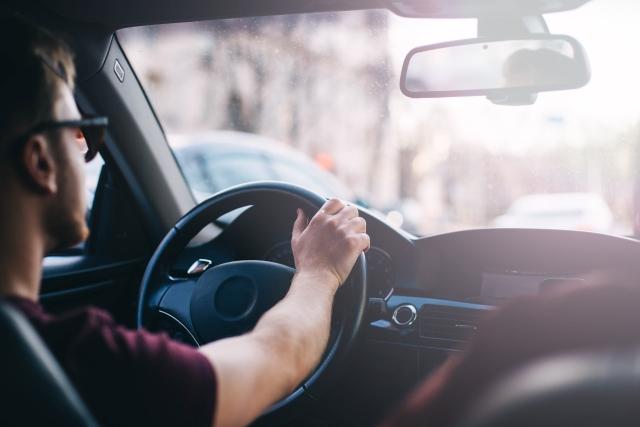J.D. Power Observation: Used Car Market
With the increase in the number of cars in China and the frequency of consumer vehicle replacements, the used car market is constantly expanding. In the first half of 2017, the cumulative transaction volume of used cars nationwide reached 5.873 million, a 21.53% year-on-year increase, and the transaction volume reached a record high of 389.6 billion yuan. However, compared with developed countries in Europe and America, China's second-hand car market is still in its infancy, and a series of complex factors restrict the development of the second-hand car market.
At the 2017 China Used Car Conference, Dr. Mei Songlin, Vice President and Managing Director of JD Power China, discussed the differences between the Chinese and American used car markets, the "five roadblockers" that restrict the development of used cars in China, and how to create a fair and transparent The third-party second-hand car valuation platform and other topics were discussed in depth.
At the 2017 China Used Car Conference held by the China Automobile Dealers Association, Dr. Mei Songlin, Vice President and Managing Director of China , the world's leading market research and consulting company JD Power , reviewed the differences between the Chinese and American used car markets and restricted China. Topics such as the "Five Roadblocks" for the development of used cars and how to build a fair and transparent third-party used car valuation platform were discussed in depth. Mei Songlin believes that China's second-hand car market is a "rich mine to be tapped", but only the "five roadblockers" to eliminate regional restrictions, inconsistent taxation, low financial support, low financing lease ratio, and opaque transaction information Only then can the used car market usher in a real spring.

Dr. Mei Songlin, Vice President and Managing Director of JD Power China
The next round of profit promotion for Chinese dealers depends on used cars
China's new car sales have already surpassed the United States and ranked first in the world as early as 2010. Since then, the gap in new car sales between the two countries has been increasing. Although China is far ahead in terms of new car sales, it is still a "small man" in used car sales. In 2016, US used car sales reached 41 million units, while China's used car sales were only 10 million units, accounting for only a quarter of the US. China's second-hand car sales are 42% of new car sales, and the US is the other way around. New car sales are almost 42% of used car sales.
In addition, the price difference between Chinese and American used car transactions is also very large. In 2016, the average used car price in the US was 135,225 yuan, while the average used car price in China was only 24,796 yuan. This is because many second-hand cars in the United States come from the rental market, and the value of second-new cars with a vehicle age of only three years is relatively high.
In the United States, used cars are a major contributor to the dealer business, and have matured and diversified retail channels. According to data from the National Association of Automobile Dealers (NADA), in 2015, the average net profit of the used car division of each dealer in the United States was $ 71,265, which is 73% higher than the new car division.
Early Chinese dealers mainly relied on new car sales to drive profit growth, and then turned to after-sales service and spare parts, as well as finance and insurance. "A truly beautiful tomorrow is driven by the fourth round of profits, that is, used cars. In the past 9 years, the contribution rate of used cars to dealer profits has increased from a negligible 2% to 5%, and there is huge growth potential and development. Space. "Dr. Mei Songlin said.

The four rounds of profit promotion for Chinese dealers are new car sales, after-sales service and spare parts, finance and insurance, and second-hand cars. Data source: JD Power (Jun Di) 2017 China Dealer Satisfaction Study (DAS)
"Five Roadblocks" for the Development of Used Cars in China
The entry of the various business entities into the second-hand car market is precisely because of the future potential of the second-hand car. However, if the second-hand car really needs to develop, the five problems must be solved.
The first is the regional limit. In March of this year, the “Letter of the Office of the Ministry of Commerce, the Ministry of Public Security, the Ministry of Environmental Protection, the Office of the Ministry of Environmental Protection, please provide the implementation of the policy to remove the restrictions on the relocation of second-hand cars” was issued, requesting the removal of the policy on restricting the relocation of second-hand cars, and making it clear that local governments are The subject responsible for this work. Prior to this, state organs repeatedly issued special notices to lift restrictions on second-hand cars. But so far, there are still local governments that have refused to implement the policy of "removal of restrictions on relocation".
Second is the tax policy. In current Chinese second-hand car transactions, non-personal sales of second-hand cars must be based on the full amount of vehicle sales as the tax base to pay transaction tax, while some other mature markets are taxed on the difference. Under the current tax policy of our country, the physical distribution company has a heavy operating burden, and consumers will be discouraged by the high consumption cost of second-hand car transactions, resulting in limited development of the second-hand car market.
Third, financial support. Regardless of the new car market or the used car market, financial support is a powerful lever to leverage the rapid development of the market. However, the status quo is that the used car loan funding provider is less than the new car loan funding provider, and whether it is wholesale financing or personal loans, the used car loan interest rate is generally higher than the new car loan.
Fourth, the method of purchase. Financial leasing is very popular in the European and American markets, but Chinese companies and individuals are still in the initial stage of purchasing vehicles through financial leasing, and the proportion is much lower than that in the US and European markets. Financial leasing can not only promote the circulation of new cars, but also an important source of high-quality used cars. In addition, Chinese consumers' acceptance of second-hand cars is very low. According to the JD Power China Automobile Sales Satisfaction Study (SSI), secondary car buyers have considered buying 5% of used cars in the past four years ; Only 3.9% of consumers who bought a car for the first time ever considered buying a second-hand car. Not only is the ratio very low, but in the past few years the ratio has also declined, from 5.9% in 2015 to 3.7% in 2017

Chinese consumers' acceptance of second-hand cars is very low, data source: JD Power 2017 car sales satisfaction study
Fifth, transaction information. Car conditions and car prices are opaque, one car per price, consumers have concerns in the center of the transaction process, and the asymmetry of information has not fully released the market potential. Consumers urgently need a transparent, trusted and reliable third-party valuation agency.
The used car market needs a fair and transparent third-party valuation agency
To promote the development of the used car industry, a fair and reliable third-party valuation agency is very important. United States UCG (used car guide) is an organization specializing in used car valuation. The UCG business was originally established by NADA (American Dealer Association) in 1933. After more than 80 years of development, it has become the leading US-based car evaluation data service provider for enterprises. In 2015, JD Power acquired UCG from NADA, making it an important part of JD Power's data business.
Second-hand car valuation depends on two aspects, one is sufficient data sources, and the other is a scientific model. In the UCG data system, there are 100 million used car transaction information. Such huge transaction information mainly comes from two aspects: one is Auction Net auction network, which is jointly established by the American Dealer Association and the American Auto Auction Association, covering 80 % Of wholesale auction transactions for dealers; the second source of information is PIN (Power Information Network), which covers 50% of US vehicle transaction data, many of which are used vehicle replacement information. The combination of Auction Net and PIN forms a huge source of information for UCG. The cooperation between the model and professional analysts can continuously revise and adjust the model.
After more than 80 years of development, UCG has established sufficient authority in the United States. The main users of UCG in the U.S. market include the vast majority of lenders, all U.S. franchised dealers, more than 10 manufacturers / exclusive financial companies, and the top ten Insurers and the top two leasing fleet companies in the United States.
"JD Power is actively engaged in multi-party cooperation and is committed to bringing this set of experiences and models to China," said Dr. Mei Songlin: "JD Power has reached an agreement with the China Automobile Dealers Association to widely collect market transaction data and build Chinese used cars. Guide to provide accurate and transparent used car transaction information for the market. "At present, UCG has started trial operation in China and plans to officially put it into use in 2018.
The establishment of a used car valuation platform is inseparable from the cooperation of the entire industry. JD Power is willing to cooperate with dealers, car dealers, trading markets and system service providers to jointly create a shared car valuation platform for the industry. In addition, JD Power ’s industry joint research, customized research, retail consulting and other business departments can also provide dealers with comprehensive solutions to help dealers and car dealers better identify the opportunities and risks of used car development and plan used car business To welcome a better tomorrow in the used car market.

